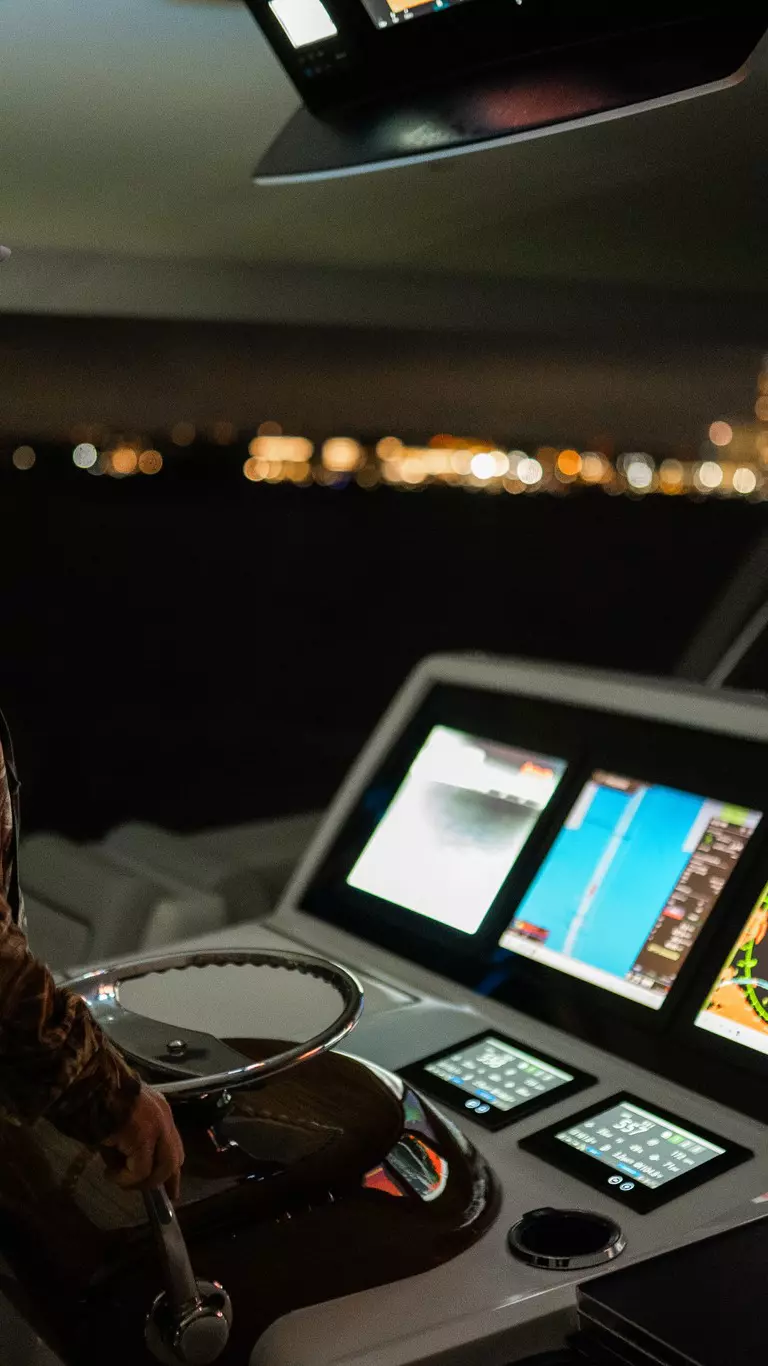
02 June 2025
Discover the different night vision technologies that can enhance your visibility in low-light conditions.
Navigating the marine environment poses unique visibility challenges—darkness, glare, spray, and fog can obscure vital details. At night, artificial city lights diminish natural night vision, making other vessels and navigation aids harder to spot. Offshore, the absence of ambient light complicates detecting unlit objects.
Over the years, various night vision technologies have emerged to enhance human visibility in low-light conditions. The most prominent options include image-intensified night vision, ultra-low-light cameras, and thermal imaging. Each offers advantages and limitations, particularly for boaters navigating unpredictable waters.

Developed in the 1970s for military use, image-intensified (I²) cameras amplify ambient light, producing their signature green-hued images. These cameras became commercially available in the early 2000s, appealing to outdoor enthusiasts due to their portability and affordability.
However, I² cameras require some ambient light, typically moonlight or starlight, to function. In overcast or moonless conditions, visibility drops significantly, making unlit objects nearly impossible to see. Additionally, bright lights can overwhelm their sensors, leading to blooming or white-out effects, potentially damaging the device.
While widely available, I² cameras vary in quality. Many off-brand models offer subpar performance, making careful selection crucial.
✔ Affordable
✔ Compact & portable
✖ Requires ambient light to function
✖ Susceptible to bright-light interference
✖ Often limited to handheld use
Emerging from CCTV technology, ultra-low-light cameras evolved to improve nighttime security monitoring. Unlike traditional Charge-Coupled Device (CCD) sensors, these cameras feature enhanced sensitivity, providing clearer imaging in near-dark conditions.
Like I² cameras, ultra-low-light systems require some ambient light—moonlight, nearby artificial illumination, or infrared supplementation. However, they are less prone to blooming and handle mixed lighting conditions better than I² cameras.
Advanced ultra-low-light cameras, such as the FLIR M300C, deliver 1080p HD video, color imaging, 30X optical zoom, and gyro image stabilization, ensuring crisp visuals even at extreme distances. Unlike repurposed security cameras, marine-grade models like the M300C withstand shock, moisture, and salt exposure.
✔ Works well in dim light
✔ Handles mixed lighting better than I² cameras
✔ Some models offer color & infrared-enhanced imaging
✖ Struggles in total darkness
✖ Performance varies across models
FLIR’s thermal imaging technology operates entirely independently of visible light. Instead of amplifying existing illumination, thermal cameras detect infrared energy—heat—and translate it into an image. Since all objects emit infrared radiation, thermal imaging remains effective day or night, even in complete darkness.
Unlike other night vision technologies, thermal cameras are unaffected by glare, allowing mariners to see objects hidden by bright reflections. They also penetrate smoke, haze, dust, and some fog conditions, making them indispensable in maritime applications.
Once considered prohibitively expensive, marine thermal cameras now offer accessible pricing, often costing less than radar systems. FLIR models such as the M364C blend thermal imaging with ultra-low-light optics, delivering stabilized, high-definition visuals with pan-tilt-zoom functionality.
For portability, FLIR’s Ocean Scout Pro provides handheld thermal vision with smooth 30Hz framerate, HD viewfinder clarity, and Wi-Fi streaming, enabling real-time visibility sharing with the crew.
✔ Works in complete darkness for safer navigation at night
✔ Unaffected by glare
✔ Detects heat signatures of vessels & objects
✔ Penetrates smoke, haze, and light fog
✖ Advanced thermal technology comes with premium price
Modern night vision technology enhances boaters, fishermen, and maritime professionals, providing essential visibility in daytime glare and nighttime obscurity. FLIR Marine remains the leader in night vision innovation, delivering rugged, high-performance solutions trusted worldwide.